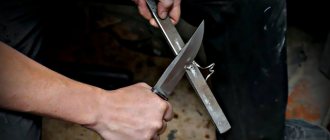The locking mechanism on the doors performs protective functions and is subjected to serious physical stress every day. Locks can be mechanical or electronic, and the latter are often more convenient. Over time, such structures deteriorate and require replacement. The reliability of electronics in this situation is higher and with good electrical protection it will last a long time. If a home owner loses the keys to a mechanical lock, he has to replace the entire lock structure. In the case of an electronic lock, things are simpler. You can create a duplicate using an intercom key copier.
Types of keys for intercoms
There are several families of intercom keys.
1. “Pills.” Officially, the standard is called Touch memory (TM) or iButton; these are contact keys in a MicroCAN housing. Tablets use the 1-Wire protocol, but the formats are different.
In the Russian Federation, these are mainly keys of the Dallas model, with which intercoms Vizit, Eltis, Z-5R, S2000-2, etc., Cyfral (keys DC2000A and Tsifral-KP1, etc.), Metakom work.
Resistive “pills” are quite rare - the resistance is read from them.
2. "Droplets" . RFID tags in a plastic case of round, oval or teardrop shape. Sometimes they are issued in the form of bracelets or cards.
Inside there is an RFID tag, just like in subway cards, beepers on goods in supermarkets and other similar things. Basically, “droplets” can be short-range (Proximity, read at a distance of up to 10-15 cm), since the more “long-range” Vicinity tags, which operate at a distance of up to 1 m, are unsafe in this case.
In the Russian Federation, EM-Marin Proximity keys are most often used, but there are also older HID tags or newer MiFare ones, as in metro maps.
3. Optical . Real dinosaurs. Somewhere in the provinces they still exist. Such a key is a metal plate in which holes are drilled in a certain order.
There is a photocell inside the intercom that detects whether the holes are drilled in the correct order.
Security is below par, forging a key is a piece of cake, and some intercoms with optical keys were successfully opened with a nail file without a trace.
Main types and models of duplicators
Today there are 3 types of intercom key duplicators on the market:
- intercom key duplicator, which allows you to create a copy of the contact locking device;
- copier for duplicating contactless intercom keys tmd;
- a universal programmer that can rewrite any type of intercom chip.
Each type of recording device has several modifications, which will be discussed below.
Contact mechanisms
The Rfid duplicator for copying contact keys is a device in 2 modifications. The first type of programmer helps duplicate META-COM and Digital keys, and the second one works with Dallas contact keys. It should be noted that Dallas chips contain hexadecimal code, and the firmware of Digital keys is performed using a protocol code characterized by a large digital volume.
How does the intercom determine whether the key is correct?
At the factory or company that installs intercoms, a special code is written . Then it is saved in the intercom memory.
When you bring the key to the intercom, it reads the code and compares it with the values from its memory. If the key value is there, the door opens.
By the way, you can open several intercoms with one key . You just need to enter the code of this key into all the necessary intercoms. It is clear that intercoms must be compatible with the key.
Moreover, there are special modules that allow you to save all the keys from one intercom and transfer them to another.
This is how they will reinstall the intercom in your entrance, and you won’t have to change the keys. Although, of course, the intercom installer may well try to make money on this.
The only exception is, perhaps, MiFare . They include a rewritable memory area into which the unique intercom code is copied.
When a master “from a stall” clones such a key, he copies only the factory code, but not the intercom code. As a result, the intercom may reject such a key - the anti-clone system will work. Only a service company can copy the factory code.
Let's look at the most common intercom brands.
- RFID Such intercoms consist of a block for radiation with a weak electromagnetic field and a contact pad. Such a key inside its structure has a simple circuit with an oscillating circuit, antennas, and a chip. When you present the key to the electromagnetic field zone, energy is released and its electrical circuit is activated. The card transmits signals, and the intercom recognizes this signal and the door opens. Such keys deteriorate if they are bent or broken.
- Touch-Memory keys. Such contact tablets are known to many people. Signal transmission via such keys works according to the electrical circuit. When we apply the key to the pad, the reading circuit inside the key is closed and the door opens. Such keys deteriorate due to strong static. Such keys are programmed with a special programmer. This requires the creation of several Clones of keys and master keys for intercoms. Models suitable for Touch Memory keys: DS, DC, KP-1, K.
When restoring or trying to overwrite a key, you must follow the rules. If you lose your key, a specialist can issue a new key by programming it in advance. If a device breaks down, you need to restore access to this device. The recovery procedure follows the same pattern as with a key. In this case, information is duplicated from the device to a new empty device. This requires a programming device. The new key will have the same code and will operate at the same frequencies as its predecessor, that is, the original.
https://youtu.be/mWjqYyEKi-s
How to make a copy of the key?
Usually for this they take a blank - an empty blank without a code . Then the master reads the code from your key and writes it onto a blank.
As a result, you get two identical keys. And since the code of the original key is already saved in the intercom, its clone will also allow you to open the door.
Discs can be rewritable or non-rewritable. If you remember the word “finalization” when burning discs, take a pie from the shelf, then it also applies here.
Technically, you yourself can assemble a key duplicator (programmer) based on Arduino or Raspberry Pi, and then make copies of the key for all occasions. There are plenty of instructions on the Internet, as well as offers to buy a duplicator for a thousand or two rubles.
The main thing is not to miss the type of intercom and key.
So, some keys are designed for a frequency of 125 KHz, others for 13.56 MHz, and so on. In addition, they can be of different types. Be aware of the anti-clone protection that your intercom may support.
DIY intercom key
When you have identified a suitable intercom key copier and selected a blank on which your original intercom key will be recorded. We recommend using a duplicator that does not require connection to a computer.
- Connect the device to the network. A notification indicating readiness for operation will appear on the display screen.
- Take the original intercom key and place it on the reading area. As soon as the key code is copied, you will see a message on the display or hear a sound signal (different programmer models inform differently).
- Attach the workpiece (blank) to the reading area. Wait for a message/beep indicating that copying is complete.
- The new intercom key is ready.
Using an electronic device, you wrote down the required code on the workpiece. The work takes a few minutes, provided that the compatibility of intercoms and blanks with the duplicator is correctly determined (see table).
Can keys become demagnetized?
It happens that you carry a “tablet” or a “drop” in your pocket, and after a while it goes bam! – and stopped working. And such nonsense every month. Something is wrong here. “Probably demagnetized” is the most popular explanation.
In fact, such keys are not demagnetized . They don’t even have a magnet, and ordinary magnets are not harmful to keys.
It's more a matter of a simple lack of contact. The blanks are cheap, they are purchased in China in bulk for a few cents apiece, so the contact may well come off, for example.
Key housings are usually not sealed. So if the key gets wet in your pocket or is often in a humid environment, it won't last long.
Theoretically, keys can be “killed” by electromagnetic radiation or a strong electrical impulse.
For example, if you put the key in the microwave and turn it on at full power or plug it into an outlet, it will stop working. But a powerful neodymium magnet, like those used in a store to remove tags, is unlikely to harm the key.
Static electricity is also not good for keys. If you carry the pill in your back pocket and squat frequently, causing the synthetic fabric to rub against the key, it won't last long either.
Finally, from frequent use, the “tablet” can simply push in the opposite direction and stop contacting the intercom. Just push it back in and it'll go away.
How to check if your phone has NFC?
You can find out whether or not there is contactless technology in a smartphone in several ways, namely through:
- settings;
- "curtain";
- applications;
- technical specifications.
Let's look at each method in more detail.
Getting information in settings
To find out if your gadget has NFC, you should look for the gear icon. It hides the smartphone settings. Then click on “More”. View all available functions in the list. If there is no NFS, then the technology is not built-in.
Attention! If there is a chip, you should immediately activate it (put a tick next to it or pull the lever).
Viewing in the curtain
Otherwise called the “quick settings” menu. You need to unlock your smartphone and swipe from top to bottom. Several icons will appear in the curtain that opens. Usually NFC is among them.
Contactless payment by Sberbank card
Keep in mind! Sometimes NFS is available, but is not displayed in the curtain. You will have to check the module additionally using another method.
If NFS is available, but is not displayed in the quick access menu, then you need to:
- enter “Quick Settings”;
- hold down the gear icon;
- find and click on “System UI Tuner”;
- open “Quick Settings”;
- hold the NFC icon and move it to the desired location.
Via apps
Special programs will help you find out about the presence of a module in your smartphone. You can download them for free in the Play Market on any phone. After installation, simply go to the application and start scanning. If there is a contactless module, a corresponding message will appear on the screen, for example “supported”. If not present - “unsupported”.
There are plenty of applications that allow you to perform such a check, the names are different:
- NFC Enabled?;
- NFC Check;
- NFC verification;
- NFC Check by Tapkey, etc.
The essence of all programs is the same, the difference is in the interface.
Study of technical characteristics
Each smartphone comes with a book that contains instructions and characteristics of the device. It is there that all the functionality of the mobile will be described. If you don’t have a paper version, find an electronic one on the Internet and read it.
You can also see the NFS antenna if you remove the back panel. There will be a module under the cover or battery. In that place, the manufacturer usually attaches a sticker with the inscription NFC. This method is only relevant for collapsible smartphones.
What is a master key and where can I get it?
After installing the intercom, the specialist remains with a special key. It may even say something like: “Master key. Don't give it to anyone."
But this key usually cannot open the door . It is needed to add new keys to memory. In an intercom, the master key code is stored in a special area so that the device can distinguish it and respond accordingly.
It’s clear that mere mortals are not given a master key. Otherwise, the service company would not be able to charge money for adding records of new keys to the intercom.
But it is possible that the master key fits several intercoms. Or when for some intercoms the “tablet” is a master key, and for others it is a regular key that opens the doors.
Here everything depends not on the key, but on what records are in the intercom’s memory.
What happens if the master key is lost ?
Usually, intercoms still have the option to register a new master key. This is, of course, a potential hacking opportunity. But, objectively speaking, it’s easier to get into the entrance by posing as a plumber than to break into something.
It is more interesting to have a universal key, or “all-terrain vehicle”. Its code is registered in all intercoms of the entrances of one house or yard.
“All-terrain vehicles” are made for postmen, utility workers, craftsmen, etc. Agree, this is much more convenient than carrying around a garland of different keys.
Also, some RFID keys of the new format, for example, RF3.1, allow you to record codes for up to 8 intercoms.
Often intercoms also support blocking keys . This is a security feature: after the door is opened with a locking key, the other keys do not work and the door is locked. The lock can be removed either by a master key or a blocking key (it all depends on the intercom settings).
By the way, it happens that a key is set as a blocking key by mistake. So if your neighbors often cannot get into the entrance after you, check if your key is blocking access.
Contactless copiers
Contactless duplicators are presented in 3 modifications.
- TMD programmers that form the radio frequency identification standard Indala, HID, EM-Marin.
- Duplicators compatible with TKRF and TECH-KOM standard devices.
- Copiers that support the Mifare standard.
Universal programming mechanisms
You can program duplicate keys on universal devices. With their help, you can not only create a copy of a digital key, but also get a set of additional useful functions:
- memory base;
- possibility of updating;
- generation of symbolic ciphers.
The updating function allows you to adjust the software base to new, original modifications of chips, so that in the future the device can make duplicates of them. The memory base provides the ability to create duplicate keys without having the original device. The key code gets into the built-in database after the first firmware update. In the future, it can be found and used to create other duplicates.
Generating codes helps to write original symbolic ciphers onto the intercom key. This option is suitable for large corporations, whose employees receive a key with a unique code to open doors. It allows you to control the time and number of visits a specific person makes to production facilities.
Is it possible to fool an intercom?
Yes, now you can buy an emulator that simulates keys of different types and produces the desired value for each intercom. The emulators even have displays and a keyboard installed, which allows you to select the desired key and display its name.
It's a funny thing, it costs about 10 thousand rubles. But it does not work without problems - it does not bypass all protection, and sometimes it may not work.
won’t hack the intercom itself , it will only pretend to be a copy of the required key. To program it, you will still need the keys themselves, which are already known to the intercom, and a duplicator device.
You can often hear that an intercom can be disabled with a stun gun. Yes, thin electronics really can’t handle a serious charge. A mechanical shock 10-15 cm below the intercom panel has the same consequences. But this is damage to property and an article of the Criminal Code of the Russian Federation.
Theoretically, you can still forcefully pull the door towards you. But to overcome the force with which the magnet holds the second part of the lock, remarkable power will be required.
Some key-key intercoms can be opened using a Krona battery. The method is humane and safe for intercoms, but it rarely works.
Let's take a closer look at the mechanics of work.
- How are the keys arranged? All of them are built according to the design of a device for one-time use. With any change in its structure, the identifier that is embedded inside becomes unusable. Here you won’t be able to make repairs yourself without the help of programmers.
- To open the key, lean it against the device. Based on the sensing distance, there are two types of devices. a) Reading distance up to 150 mm, for example Proximity. b) up to 1 m, for example, Vicinity.
Is it possible to open the intercom with a smartphone?
NFC intercom models are gradually entering the market . More often they are installed in large offices, less often in residential buildings.
If you have this option, your smartphone supports NFC, and the intercom operates at a frequency of 13.56 MHz, you may be able to refuse keys.
But for MiFare, for example, the smartphone must also have a Secure Element chip, and their availability, even within the same smartphone model, often differs from market to market. If there is still a chip and the other conditions are met, everything can work out.
There are also NFC adapters that can turn an old intercom into a new and promising one. You can open the door with both a tablet and a smartphone.
Remember that you may find yourself outside the door in the cold, but charging at home. And yes, the number will not work with an iPhone . Apple has severely limited NFC capabilities in its devices.
What is the purpose of duplicators?
It is known that the copier uses working electronic chips onto specialized compatible blanks to read and then copy codes. Any number of similar duplicates can be made.
The latest models of copiers provide the opportunity to make magnetic keys for intercoms in the following formats:
- Two-pin (using the TM protocol);
- Contactless cards or key fobs;
- Less common three-pin chips.
They support a fairly wide range of blanks:
- Two-contact blanks;
- Universal;
- Three-pin square;
- Contactless RFID.
Recording of the read code can only be done on specialized blanks, because factory identifiers are not intended for recording new codes.
What about intercom access codes?
Here, too, everything depends on the intercom. But most models that are installed in the Russian Federation now support entering combinations of characters that allow you to open the door. This often works on Visit intercoms and less often on models from other manufacturers.
We deliberately do not publish combinations, at least because the list for all models will be long. will almost certainly google the master code for your intercom . Unless, of course, the door opening code was changed during installation for your own safety.
These are not at all the numbers that are written to your key. For example, the length of a simple key for DS1990A tablets from the Dallas company is 6 bytes, which is 281474976710656 different combinations. You are unlikely to remember a combination of this length, but you can read it on the keychain itself. A hexadecimal key is usually laser engraved on the surface.
PS Previously, there was a horribly banal life hack: keys with the code 00 00 00 or FF FF FF could open all doors. It was these values that were recorded in the free cells of the intercom and participated in the comparison when checking the key. But this hole has long been closed.
(
219 votes, overall rating: 4.64 out of 5)










